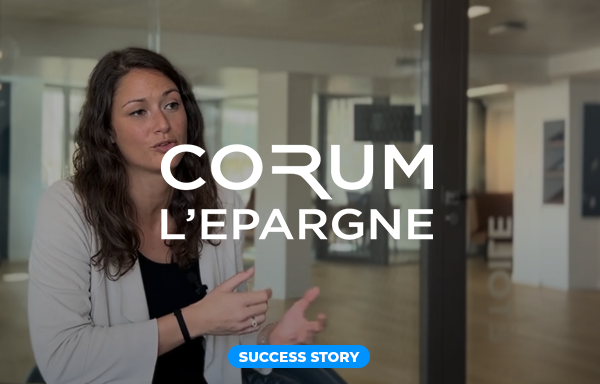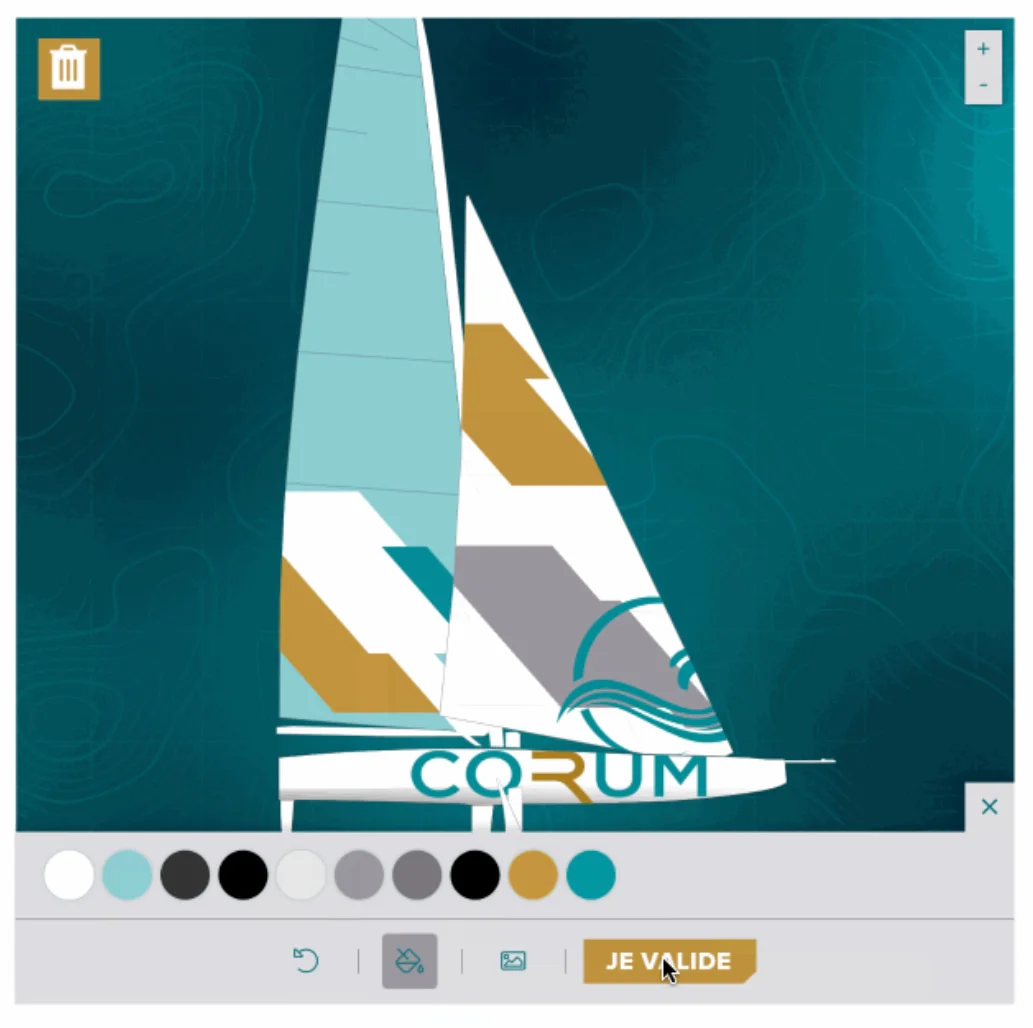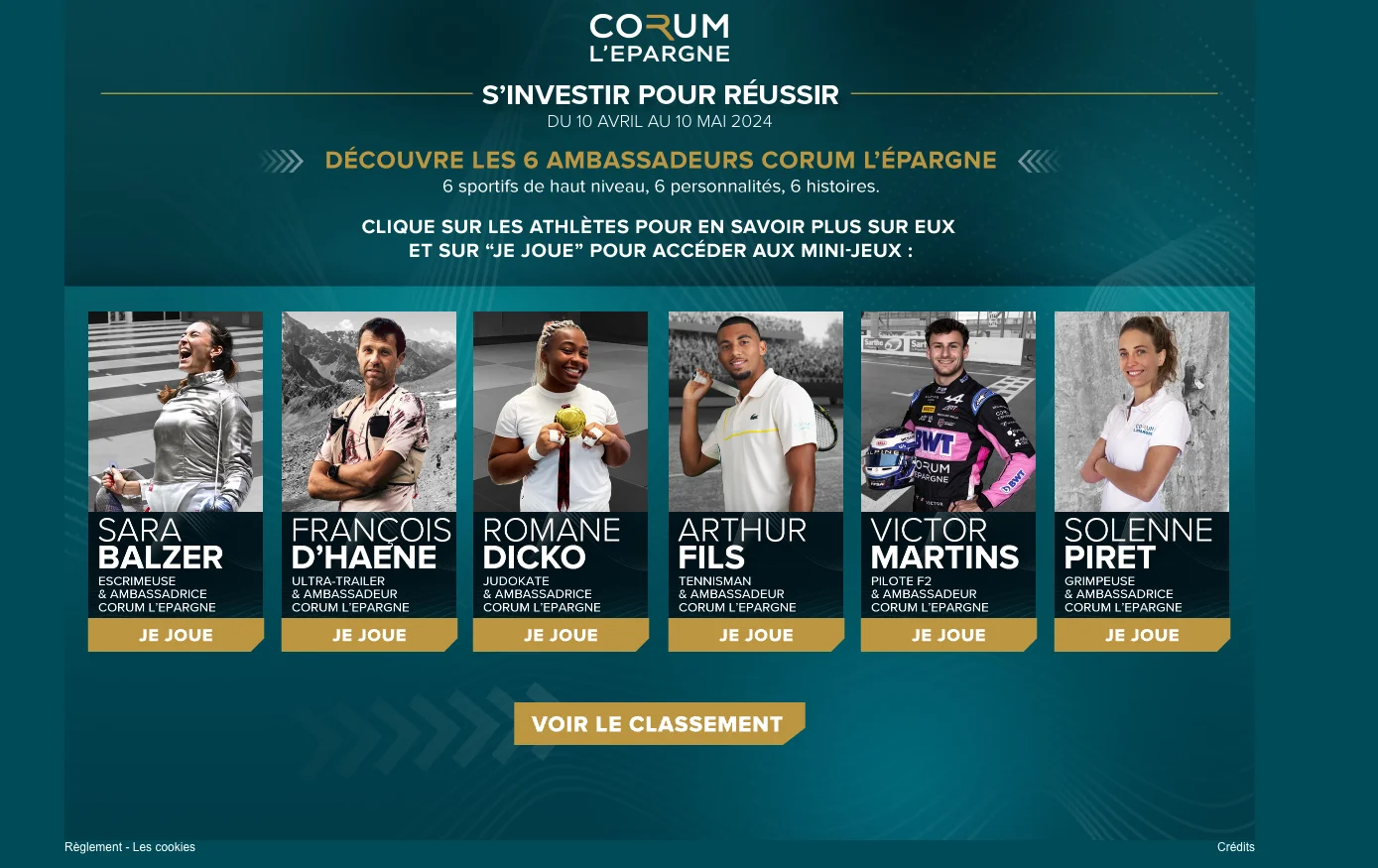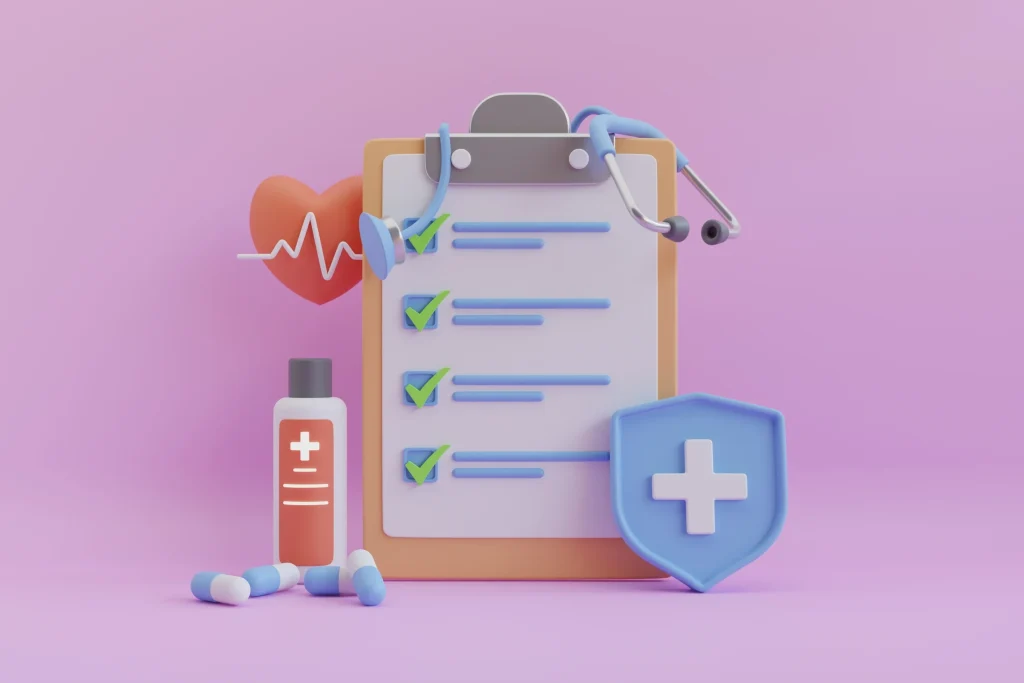
Corum L’Épargne: sports marketing and gamification to boost brand awareness
CORUM L’Épargne is just one of the brands that have embraced gamification as a communications tool.This French company, which offers transparents and accessibl savings solutions, has chosen Playable Marketing coupled with sports sponsorship to raise its profile and effectively address its audience.
In this article, we’ll look at the relevance of gamification in meeting marketing challenges of the banking sector in general, and CORUM l’Épargne in particular. Through examples of playable campaigns she has run alongside Adictiz, Lucie Odoux, Head of Sports Sponsorship, shares with us the best practices she has learned from them.
Why has Corum l’Épargne chosen gamification to optimise its marketing campaigns?
The banking sector is facing a number of challenges: creating a closer relationship with a younger audience, improving the customer experience, increasing user loyalty, adapting to new digital communication and usage channels, and so on.
To meet all these challenges, and in particular to strengthen its reputation, CORUM l’Épargne has decided to implement a gamification strategy. As the company has been heavily involved in sport sinces 2018 (supporting 21 athletes in a wide variety of disciplines), gaming is part of its brand DNA. But above all, playable marketing enabled it to achieve several of its commercial objectives.
Boosting awareness marketing through gamification
Above all, gaming is an excellent way to satnd out from the crowd and reach a wider audience.
As Lucie Odoux, Head of Sports Sponsorship, explains in her testimonial:
Gamification allows us to address a new audience, or at least our audience, but in a different, more playful way. It allows players to spend more time with the brand, without really realising it.
By offering fun marketing games, CORUM l’Épargne’s primary objective is to develop its brand awareness. The idea is to multiply the points of contact with its audience via interactive and engaging experiences, in order to work on the presence of mind.
The games enable the company to collect new contacts (via opt-in forms for subscribing to its mailing list and sharing opt-in forms)). New contacts that the company would not necessarily have been able to reach with more traditional communications, such as members of GenZ for example.
Generally speaking, playable marketing is an excellent way of modernising your brand image and humanising your branding. Interactive formats are highly effective in engaging audiences around unifying values and creating a strong emotional bond that traditional communications (static advertising, etc.) are unable to generate.
Raising awareness of the need for better financial management
In a sector as complex and sensitive as banking and savings, play-based marketing can also be a way of raising awareness and educating customers. This is especially true when you’re targeting a fairly young audience, for whom it’s important to share good practice in a fun way.
With these marketing games, CORUM l’Épargne is making its saving message much more accessible. It is also demonstrating transparency, a strong value for the company, by helping its users to understand where they are investing their money.
Improving customer relations and building audience loyalty
Finally, gamification helps to strengthen the bond with its audience: a major challenge for a 100% digital player like CORUM L’Épargne. Gamification makes it possible to extend the time that users spend with the brand: qualitative time that creates a stronger customer relationship, based on positive emotions such as surpassing oneself, creativity, etc.
It’s also a lever for maintaining contact that has been established with prospects and new customers by collecting opt-in data. But also by collecting customer data (via a participation form or by analysing interactions within the game) so that they can be reactivated later with personalised, and therefore more powerful, content.
2 examples of successful gamification campaigns
To achieve these objectives, CORUM L’Épargne has set up two gamification campaigns:
A customizer to boost your marketing profile
The company was involved in sailing, with a boat taking part in various races such as the Vendée Globe and the Route of Rhum, and decided to use this as a lever to raise its profile. With the boat due to undergo major modifications before its next participation in a race, CORUM L’Épargne took the opportunity to involve its audience in the project to decorate the hull and sail.
The Customizer mechanism was ideal for inviting users to suggest ideas for decorations (with elements chosen by the brand beforehand). The players were then able to submit various proposals for the artistic decoration of the boat.
The campaign worjed very well with the CORUM L’Épargne audience, as it allowed them to take an activa part in a mjor project for the brand and let their creativity shine through. The Customizer enabled the company to achieve an excellent opt-in rate (via subscription to its newsletter) and thus raise its profile with its target audience.

A game mini-site to optimise your sports marketing
CORUM L’Épargne has also used Playable Marketing to engage its audience and reaffirm its commitment to sport. As a reminder, the company supports 21 athletes in a wide vartiety of disciplines, from fencing and climbing to judo and Formula 2 racing.
As sport is a powerful lever for reaching a wide audience, but also for engaging its public and uniting them around strong values, the company has combined its sports marketing to its gamification strategy. To this end, it has launched a site with six mini sports games allowing users to discover six of the athletes supported by the brand.
This immersive experience enabled CORUM to bring participants into the sporting world of its athletes, while maximising the time spent with brand.

3 tips for boosting marketing awareness through gamification
Drawing on her experience of gamified marketing, Lucie Odoux shares 3 tips on how to optimise your campaigns and turn them into powerful levers for building brand awareness.
- Choosing the right entertainment format, depending on tis strategic objective and target audience. They key is to offer an interactive experience that is aligned with the brand’s universe (in this case, sport) and the results you want to achieve. To boost its brand awareness, CORUM relied on popular sports games, but also on initiatives that anebled its audience toget involved in a major renovation project.
- Track the right KPIs to assess the effectiveness of your campaign and improve what needs to be improved. CORUM L’Épargne wanted to raise its profile, so it monitored its brand image with a sufficiently large panel. The company also monitored its number of subscribers on social networks and its opt-in rate (two key metrics for assessing its ability to reach a new audience).
- Equip yourself with an effective gamification marketing tool. CORUM chose Adicitiz to give it access to a wide variety of games that are both highly adaptable and easy to customise ot its challenges. It also enlisted the support of the Adictiz teams to create high-quality, innovative experiences and work on the media coverage of its campaigns to reach the right targets.
Conclusion
Gamification is a highly effective way of boosting brand awareness in marketing. Expand your audience and strengthen your brand image with our fun, interactive advertising tools!




